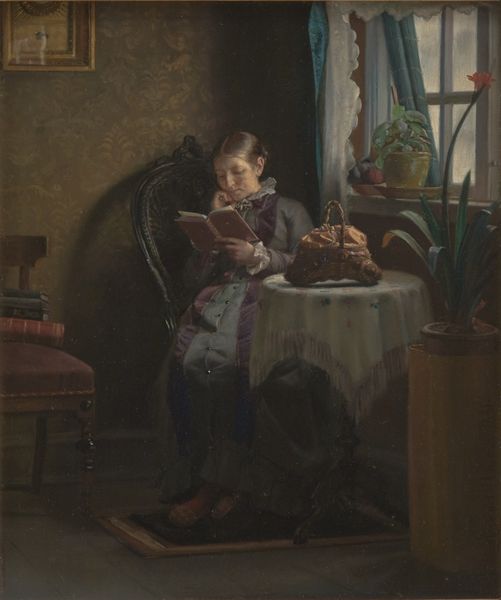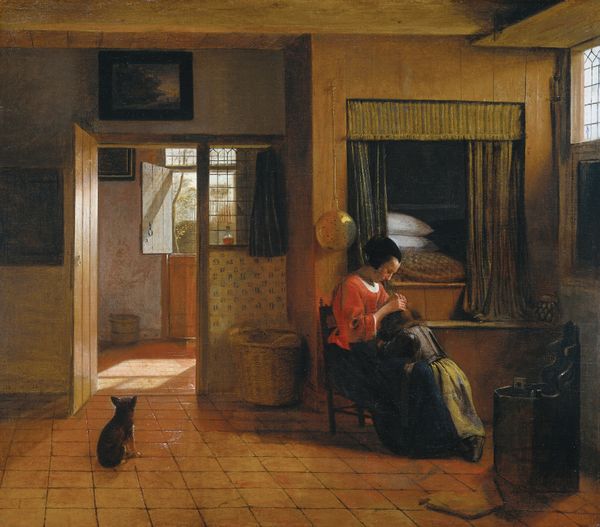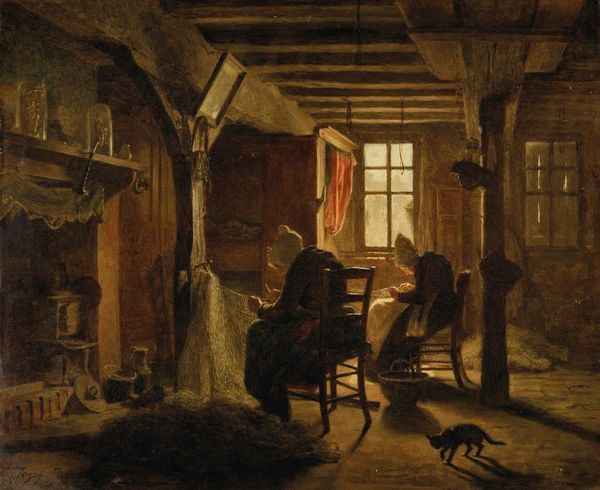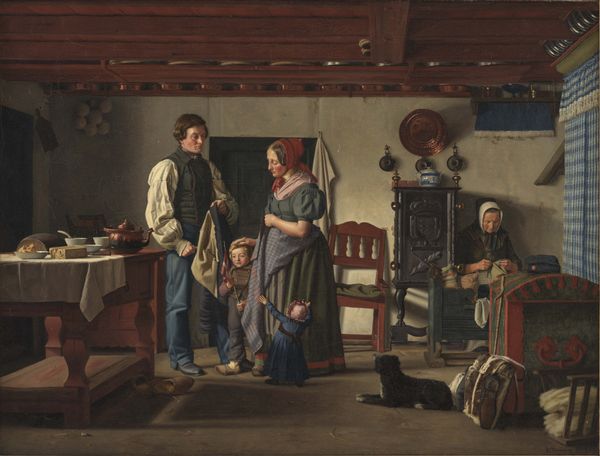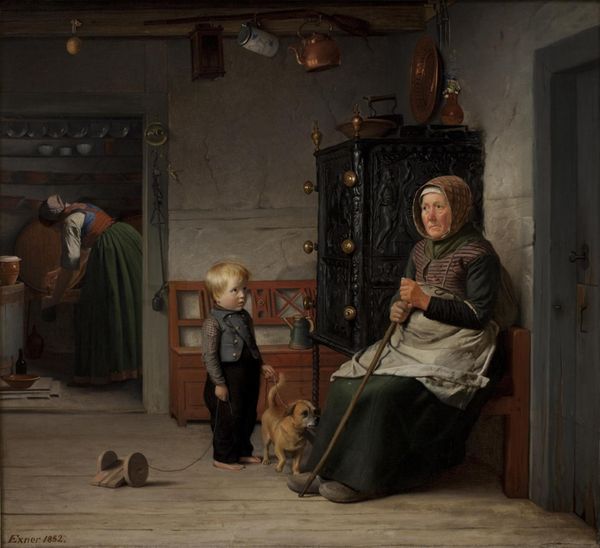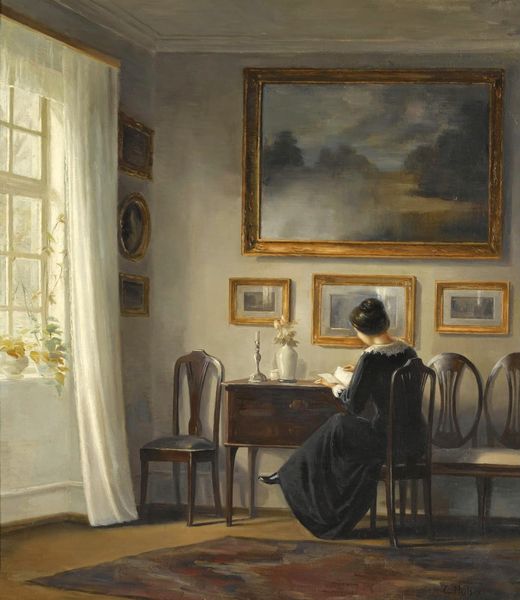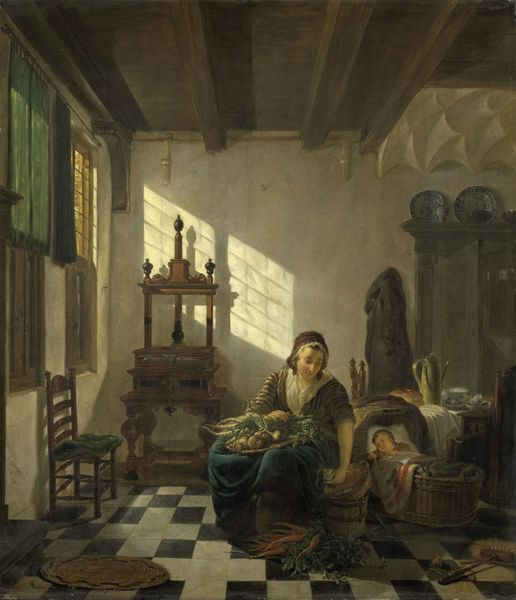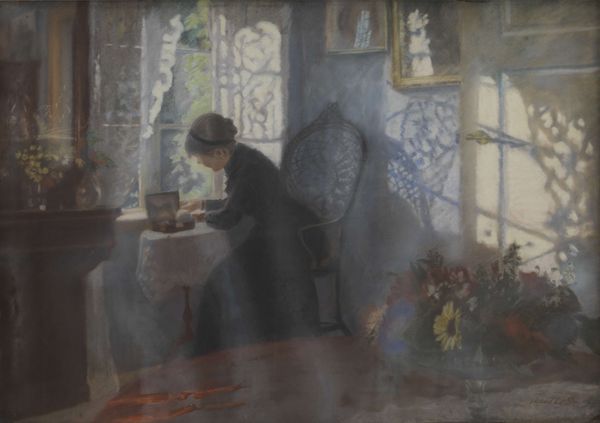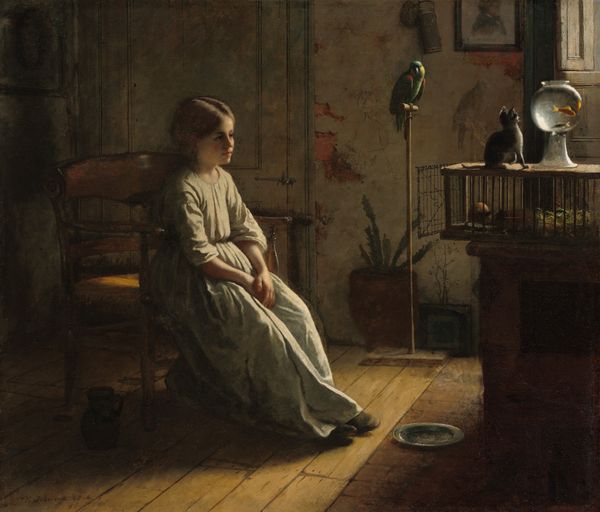
painting, oil-paint
#
portrait
#
painting
#
oil-paint
#
genre-painting
#
realism
Dimensions: 38.5 cm (height) x 30.5 cm (width) (Netto)
Curator: Julius Exner painted "Et telegram" in 1893. This genre painting, now residing at the SMK in Copenhagen, depicts a woman writing. What are your first impressions? Editor: A profound stillness emanates from the work. The subdued palette of browns and grays, punctuated by a subtle red accent, evokes a palpable mood of melancholy and solemnity. Curator: Exner's choice of realism underscores the gravity of the woman's situation, offering viewers a window into the lives of ordinary people during this period, as we note that in her solitude and bowed head, the narrative extends far beyond a mere moment captured on canvas. The absence of adornment focuses on the universal themes of sorrow and waiting, particularly poignant when interpreted through a gendered lens, wherein women's roles were often confined to the domestic sphere. Editor: I agree, and the compositional arrangement, notably the stark geometry of the table meeting the soft curve of her form, creates a fascinating tension, not only highlighting the act of writing but suggesting a world balanced between the public, signified by the message, and the private domain embodied by her solitary posture. The interplay of shadow and light emphasizes her isolation, too. Curator: Indeed. This domestic scene captures not only the woman's emotions but also suggests the larger societal forces at play, which at the time largely placed women as emotional support, burdened with uncertainty brought on by distant communications. There is much in that time we would critique today as overtly sexist and discriminatory in light of modern theory. Editor: But observe how Exner masterfully employs perspective, which is especially evident in how our view extends through the window beyond, hinting at a reality much greater than the immediate constraints of the room and circumstances. Note how Exner manipulates our reading by introducing exterior brightness but focusing the figure in what we can take to be relative shadow and internal sadness. The exterior light has little impact. Curator: Understanding this work invites us to reflect on the stories embedded within art, beyond aesthetics. Art must represent as well as embody meaning. Editor: It compels us to examine not only how forms are constructed but, further, how artists create visual poetry that allows emotion to cut to the viewer's core.
Comments
No comments
Be the first to comment and join the conversation on the ultimate creative platform.


